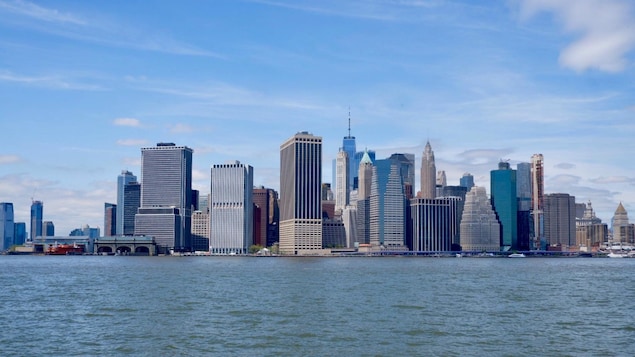“It’s daring, but above all it’s necessary. After years of discussions, New York Mayor Bill de Blasio presented his plan in mid-March to protect lower Manhattan from flood waters.
The City wants at all costs to prevent a catastrophic scenario, such as Hurricane Sandy in 2012, from repeating itself. At the time, the natural disaster caused the equivalent of $ 19 billion in damage.
The multiple projects announced in March are mainly concentrated around southern Manhattan, where the financial sector is located.
A view of the riverbank
Photo: Radio-Canada / Raphaël Bouvier-Auclair
—
To create a space between the buildings and the water, it is proposed, for example, to lengthen certain sections of the banks of the East River from 15 to 150 meters. Will this extension house new buildings or a park? The City has not yet decided.
In Battery Park, on the tip of Manhattan, work should begin next year to enhance the esplanade and the docks. A natural barrier must also be built in the park.
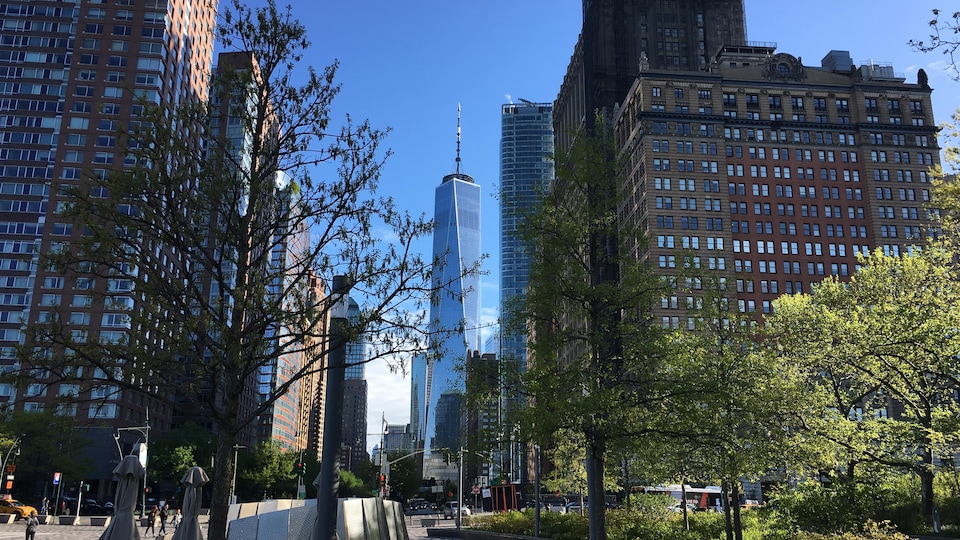
Battery Park, à New York
Photo: Radio-Canada / Marcel Calfat
—
It is an area that we have reclaimed from the sea. Now, the idea is to provide natural protection as there was at the beginning, but which would be usable, since it would be green spaces.
If he welcomes the will of the City, the specialist in urban resilience Rafael de Balanzo wonders if more small projects, better dispersed on the territory, would not benefit a greater number of citizens, especially than, according to the City, nearly three million New Yorkers live in a hurricane evacuation zone.
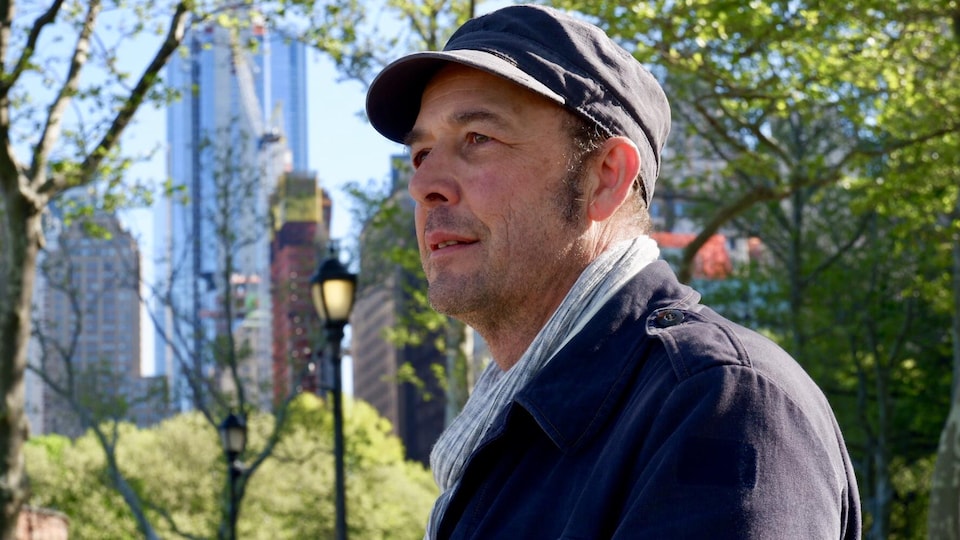
Professor Rafael de Balanzo is a specialist in urban resilience issues.
Photo: Radio-Canada / Raphaël Bouvier-Auclair
—
The city administration, which has proposed initiatives for some other sensitive areas, justifies the emphasis on southern Manhattan by pointing out that 75% of subway lines pass through this area which is home to one tenth of the city’s jobs.
Does New York have the means for its ambitions?
The ambitious strategy presented by the mayor of Blasio is accompanied by a steep bill. Ten billion dollars should be necessary for the realization of the projects. For now, the municipal administration has simply announced an investment of 500 million.
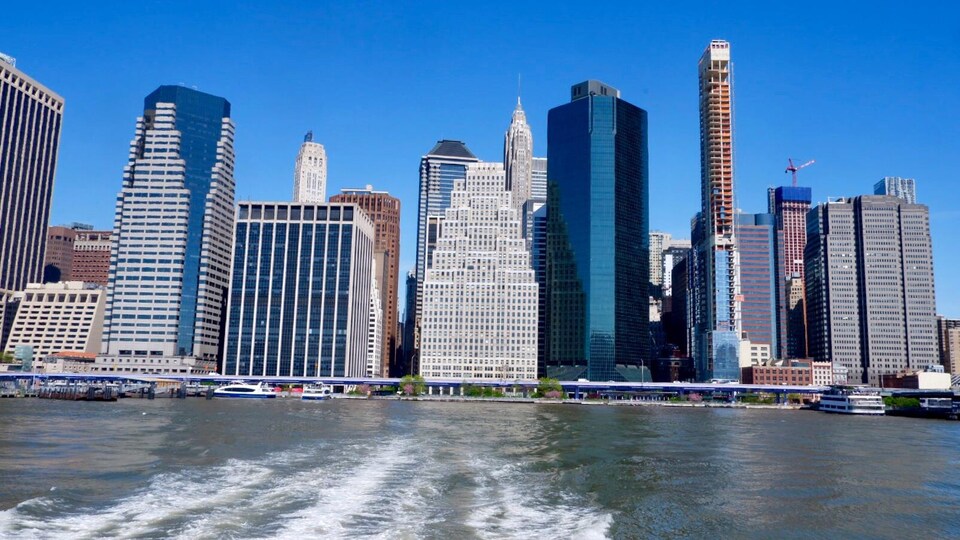
Manhattan, seen from a ferry.
Photo: Radio-Canada / Raphaël Bouvier-Auclair
—
For its plans to turn into construction sites, New York must look to the US government. However, the mayor admits that it will be difficult to obtain such large amounts from the Trump administration.
In this context, is the New York strategy realistic? Roland Lewis, president of the Waterfront Alliance, an organization that promotes better shoreline development, calls on elected officials to come together to protect the country’s economic center.
It is not a Republican or Democratic problem. It is a human problem that must be resolved. At the end of the day, Mother Nature will have the last word.
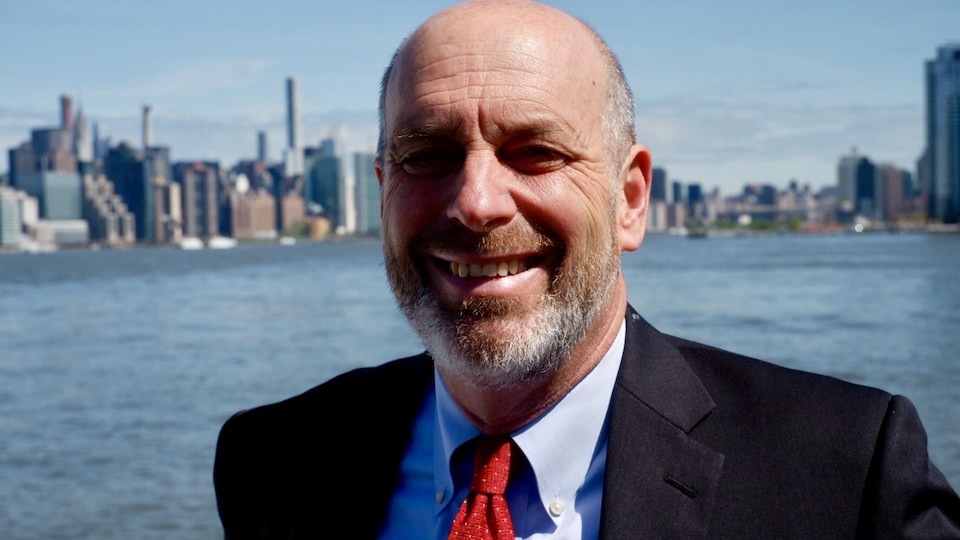
Roland Lewis, President of the Watefront Alliance Group
Photo: Radio-Canada / Raphaël Bouvier-Auclair
—
The private sector is joining in
In a city where land and properties near the waterfront are worth a fortune, it’s not just the city administration that’s worried about the impact of rising waters.
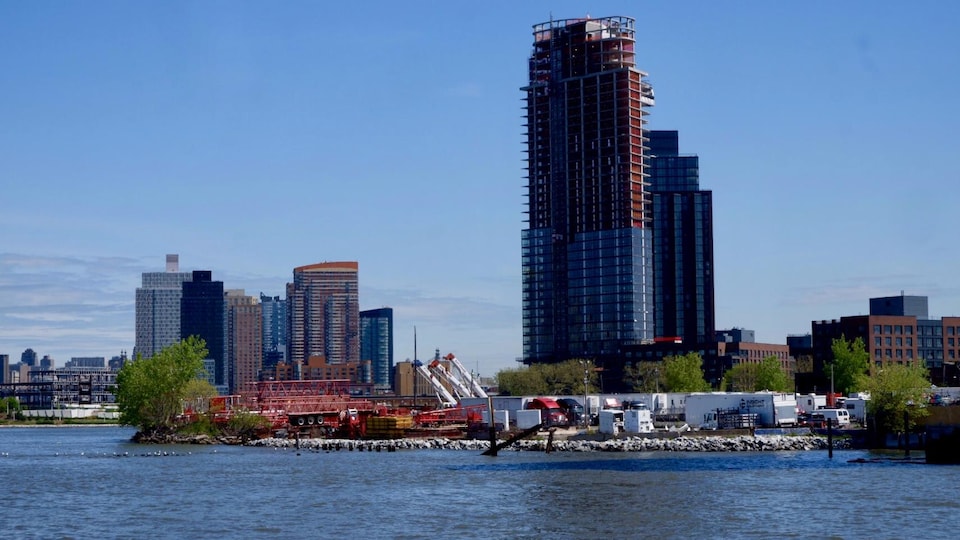
This real estate project in Brooklyn will be adapted to the risks of flooding.
Photo: Radio-Canada / Raphaël Bouvier-Auclair
—
“A lot of the big real estate developers we talk to take this seriously,” says Roland Lewis of the Waterfront Alliance, who has noted changes in mentality in recent years.
His organization has also worked with certain developers to develop a construction certification adapted to the risks of flooding.
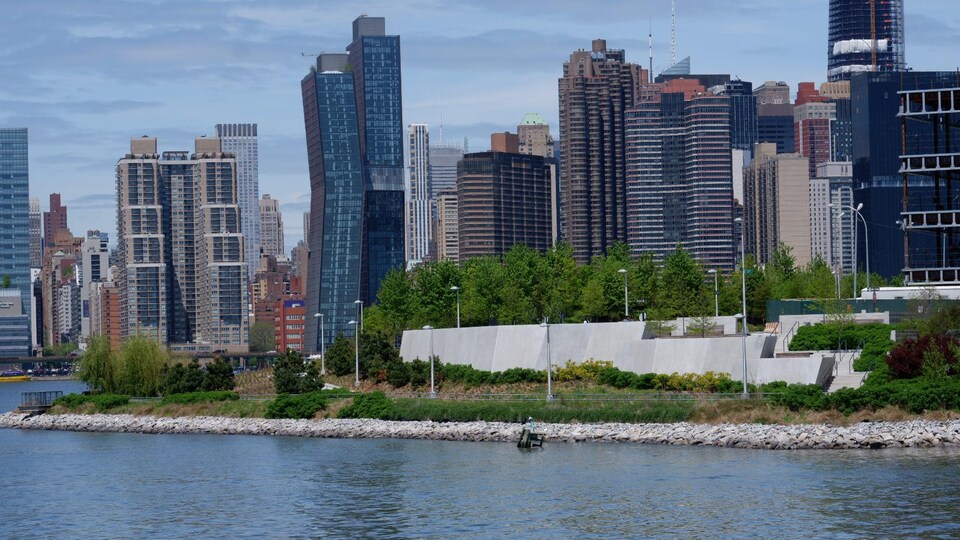
A project adapted to the flooding in the Queens district.
Photo: Radio-Canada / Raphaël Bouvier-Auclair
—
In some large projects under construction, the developers, for example, made sure to raise the land above sea level and build a sloping park between the water and the buildings. In a development in the Queens district, a wall surrounded by vegetation has even been erected.
It will take years for the city’s big plans to materialize, but in New York, the landscape is already changing.
–
